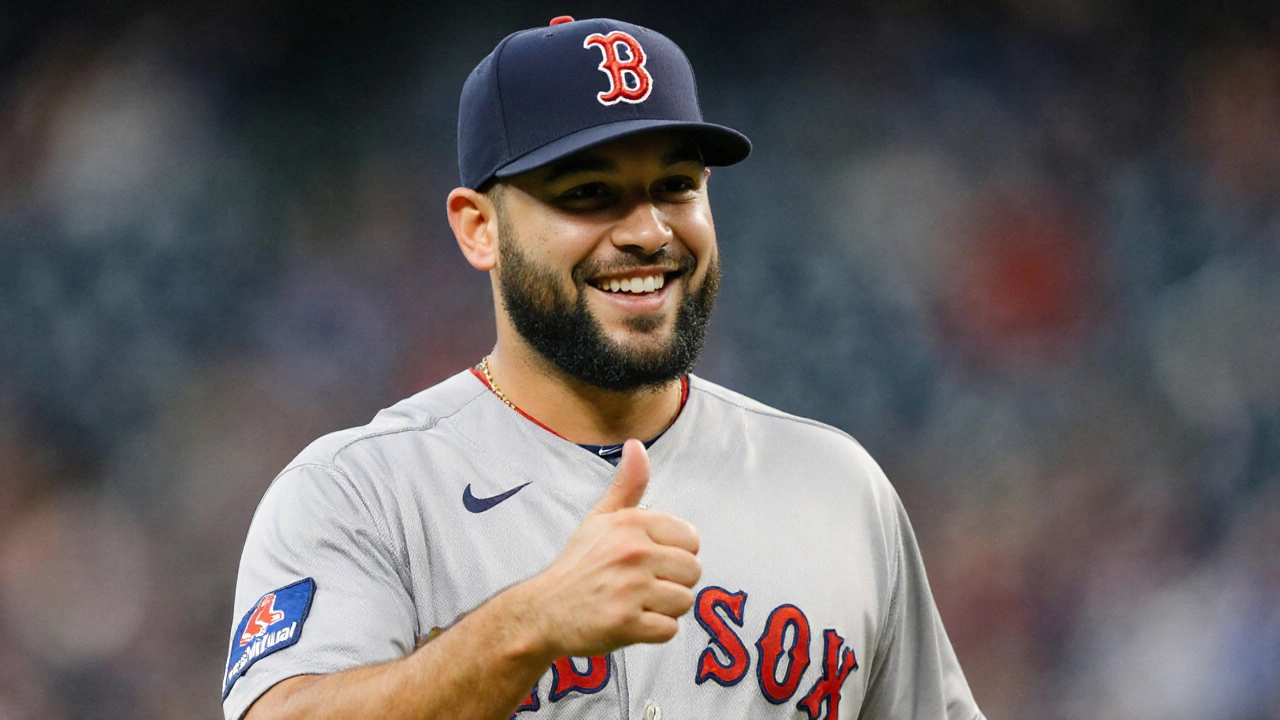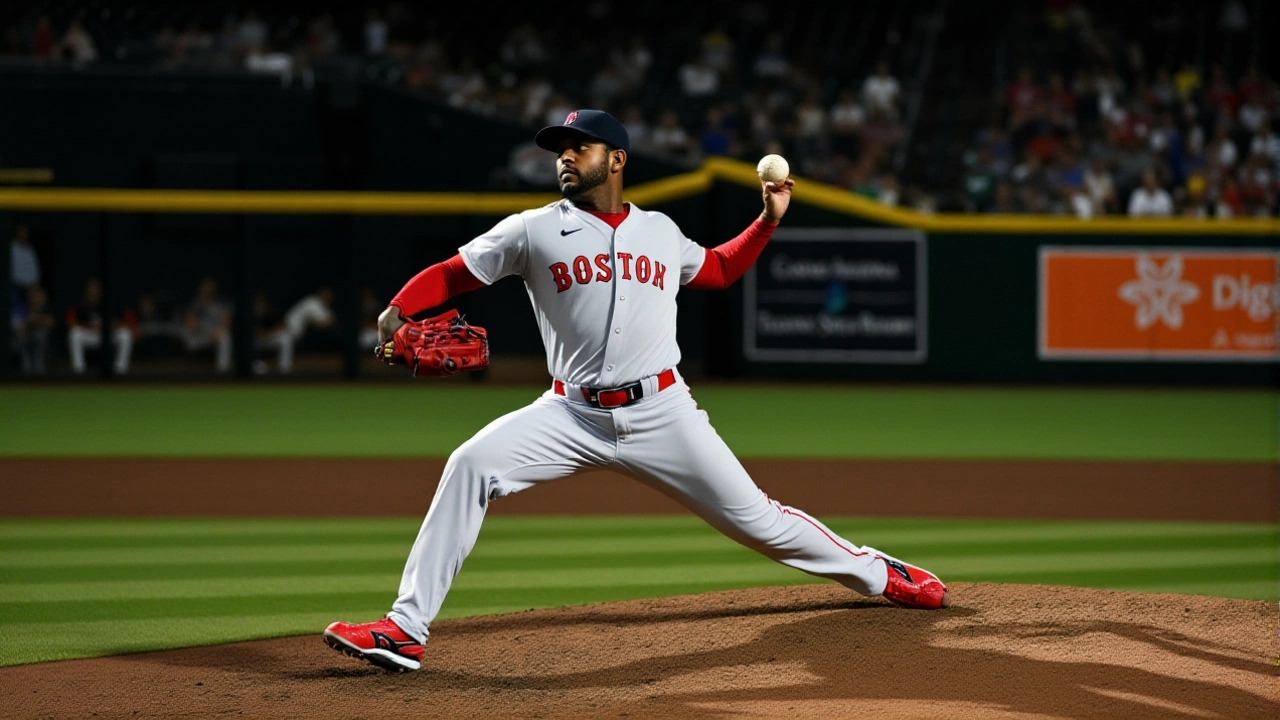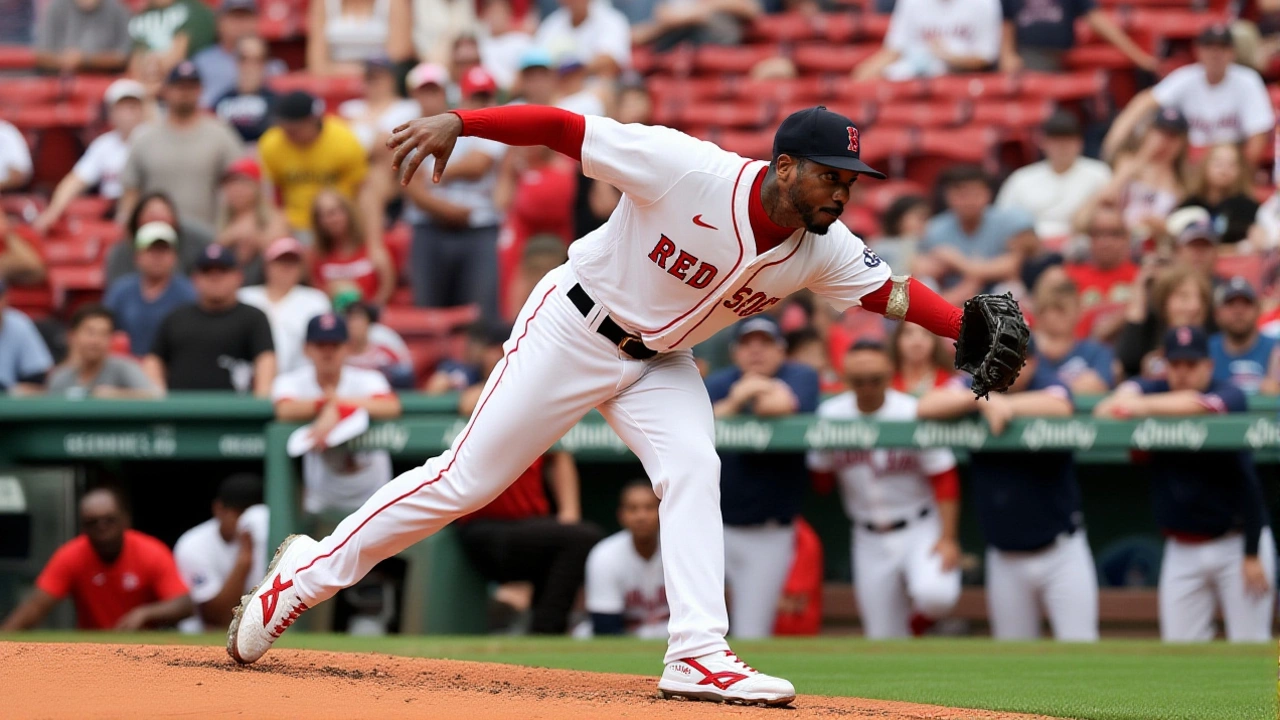When Aroldis Chapman, the eight‑time All‑Star closer for the Boston Red Sox, agreed to a one‑year extension on Saturday, August 30, 2025, the club secured his services through the 2026 season with a vesting option for 2027. The deal, reportedly worth $13.3 million for 2026, hinges on innings‑pitched thresholds for the optional year, according to MLB.com insiders Theo DeRosa and Chris Cotillo. Though the Red Sox have yet to issue an official press release, the news has already set off a wave of analysis among fans and analysts alike.
Historical context: Chapman’s journey to Boston
Born in Holguín, Cuba, Chapman burst onto the major‑league scene in 2010 with a fastball that could touch 105 mph. After stints with the Cincinnati Reds, Chicago Cubs, New York Yankees, and a brief return to the Cubs, he landed in Boston in December 2024 on a one‑year, $10.3 million contract. The move was seen as a low‑risk, high‑reward gamble – a veteran closer with a reputation for blowing saves, but also a proven strikeout artist.
Since his arrival, Chapman has reshaped the Red Sox’s bullpen identity. In his first season with the club, he posted a 2.31 ERA and logged 68 strikeouts in 53 innings, but it was the 2025 campaign that truly altered the narrative.
2025 season: A career‑best performance
Through 57 appearances up to August 30, Chapman logged a staggering 1.04 ERA – the lowest of his entire 15‑year career. He struck out 74 batters while walking just seven, yielding an eye‑popping 74‑to‑14 K/BB ratio. His 26 saves in 28 opportunities translated to a 93 % conversion rate, and opponents managed a meager .119 batting average against him.
Statcast’s advanced metrics reinforce the eye‑test: expected ERA (xERA) sits at 1.97, and expected batting average against (xBA) is .167, indicating that even the luck factor favors Chapman. In terms of Wins Above Replacement, he posted a 3.2 WAR figure, eclipsing his previous career high of 3.4 in 2012 with the Reds.
- 1.04 ERA (career best)
- 74 strikeouts, 7 walks in 52 innings
- 26 saves, 2 blown saves
- 0.00 ERA in August 2025 (AL Reliever of the Month)
- Maximum velocity 103.1 mph
The secret sauce? While Chapman still flashes triple‑digit fastballs, he’s broadened his arsenal with a sinker, slider, and splitter – a tactical shift from his earlier “grip‑it‑and‑rip‑it” approach that keeps hitters guessing.
Details of the extension
The agreement adds a one‑year, $13.3 million guarantee for the 2026 season. If Chapman pitches the requisite 55 innings, a vesting option automatically triggers for 2027, potentially netting him another $7 million, according to the sources. The structure mirrors deals given to late‑career relievers who can still dominate, such as the 2023 extension for Boston’s own Trevor Hobbs.
Chief Baseball Officer Craig Breslow hinted at the move earlier in the week during a Boston Globe interview: “As we sit here and watch a closer having a historically good season, it’s something we have to consider. Obviously it takes both sides to work through some things. I think he’s been outspoken about how much he’s enjoyed it here.”
Chapman, for his part, said in a post‑game press conference: “I’m having the most fun of my career in Boston. The fans, the city, the locker room – it feels right to stay and keep pushing.”

Reactions from around the league
Boston fans took to social media with a mix of relief and celebration. The hashtag #ChapmanRedSox trended locally on Twitter, amassing over 20,000 mentions within hours. Former Red Sox pitcher David Price posted, “Aro’s still a gun. Glad we kept him.”
Opposing teams expressed concern. The New York Yankees’ general manager, Tommy Conway, remarked, “We were hoping the market would shift, but Boston just doubled down on a premier closer.”
Analysts at Fangraphs noted, “The risk of a 37‑year‑old reliever declining is real, yet Chapman’s underlying peripherals suggest this isn’t a short‑term flash. The vesting option is a smart hedge for Boston.”
Impact and future outlook
The extension positions Boston as a serious contender in the AL East. With the closer role locked down, the Red Sox can focus on solidifying the middle‑relief corps and bolstering the rotation ahead of the trade deadline. If Chapman fulfills the innings threshold, the club secures a veteran arm at a cost well below market rates for elite bell‑ringers.
However, the deal also highlights the growing trend of teams betting on older relievers with elite velocity. The success—or failure—of this extension could influence future contract strategies league‑wide, especially as data shows a measurable decline in fastball velocity after age 35.
Looking ahead, the Red Sox face a crowded free‑agent market in the winter. Keeping Chapman means they can allocate resources toward hitters or starting‑pitcher depth rather than scrambling for a last‑minute closer.
Background: The evolution of the modern closer
The role of the closer has transformed dramatically over the past two decades. In the early 2000s, the position was defined by raw velocity and a single dominant pitch. Today, successful closers blend high‑speed heat with an expanded repertoire, precise command, and advanced analytics to exploit hitters’ weaknesses.
Chapman’s career mirrors that shift. Early in his tenure with the Yankees, he relied almost exclusively on a 101‑plus mph fastball and a hard‑thrown slider. By 2023, he began integrating a sinker and a splitter, a change that coincided with a resurgence in his strikeout rates after a modest dip in 2021.
Boston’s willingness to adapt to Chapman’s evolving skill set underscores a broader organizational philosophy: value veteran adaptability over raw age metrics. If the extension pays off, it could serve as a case study for other clubs navigating the twilight years of high‑velocity relievers.

Frequently Asked Questions
How does the extension affect the Red Sox’s payroll flexibility?
By locking in Chapman for $13.3 million in 2026, Boston frees up roughly $6 million of projected free‑agent money that would have been needed in the 2026 market. That cushion allows the club to pursue a mid‑tier starter or a left‑handed reliever before the July deadline without breaching the luxury‑tax threshold.
What are the innings criteria for Chapman's 2027 vesting option?
Reports indicate the option vests if Chapman reaches 55 innings pitched in the 2026 season. At his current 2025 pace—averaging about 0.9 innings per appearance—he would need to appear in roughly 61 games to meet the threshold.
Will Chapman’s performance likely decline next year?
While velocity typically dips after 35, Chapman’s recent diversification of pitches and his elite spin rates have mitigated the risk. Statcast’s xERA and xBA suggest his underlying skill set remains robust, so a significant decline is not foregone.
How does Chapman’s 2025 season compare to other historic closer performances?
His 1.04 ERA tops the 2023 season of Edwin Diaz (1.22 ERA) and ranks among the lowest single‑season ERAs for relievers with at least 50 innings since the live‑ball era. The combination of a sub‑1.00 ERA, >1.0 K/9, and a .119 opponent average is exceptionally rare.
What does this deal mean for other veteran relievers on the market?
It could set a precedent for clubs to offer short‑term, performance‑linked extensions instead of long‑term commitments. Teams may now view veteran closers as “low‑risk, high‑reward” assets if they can lock in conditioning clauses tied to innings or appearances.
